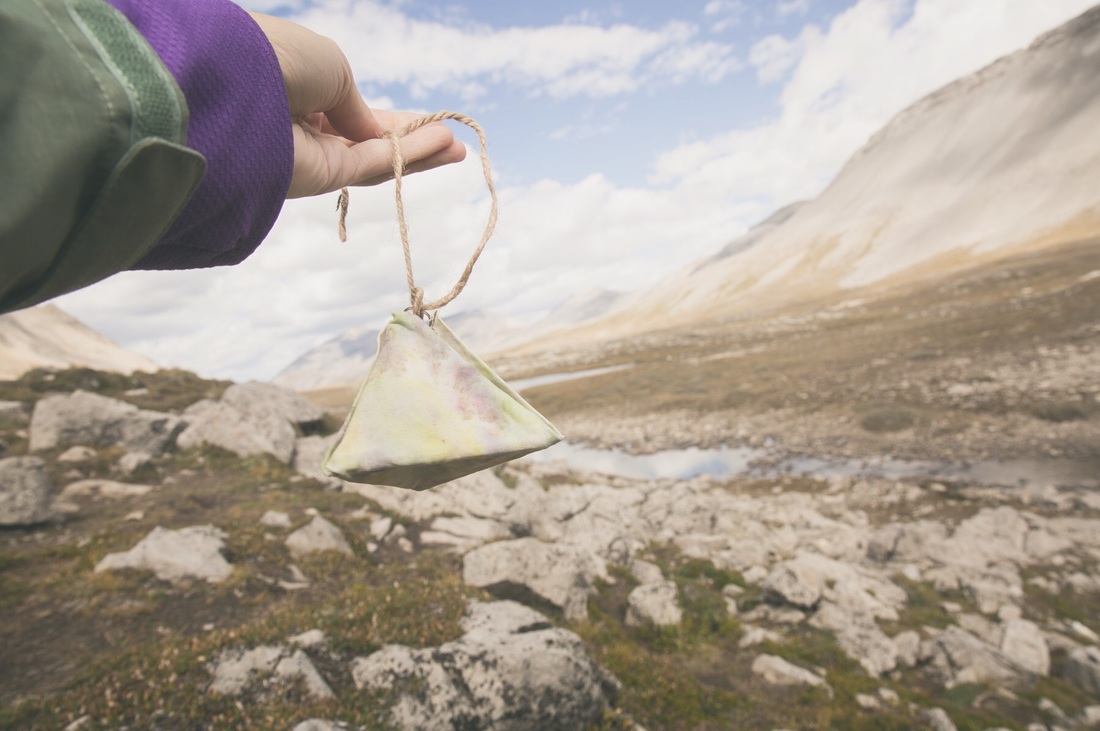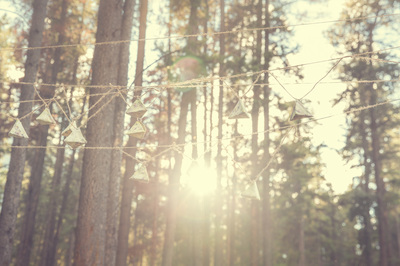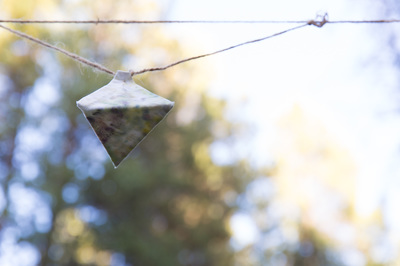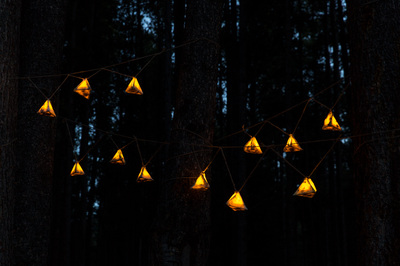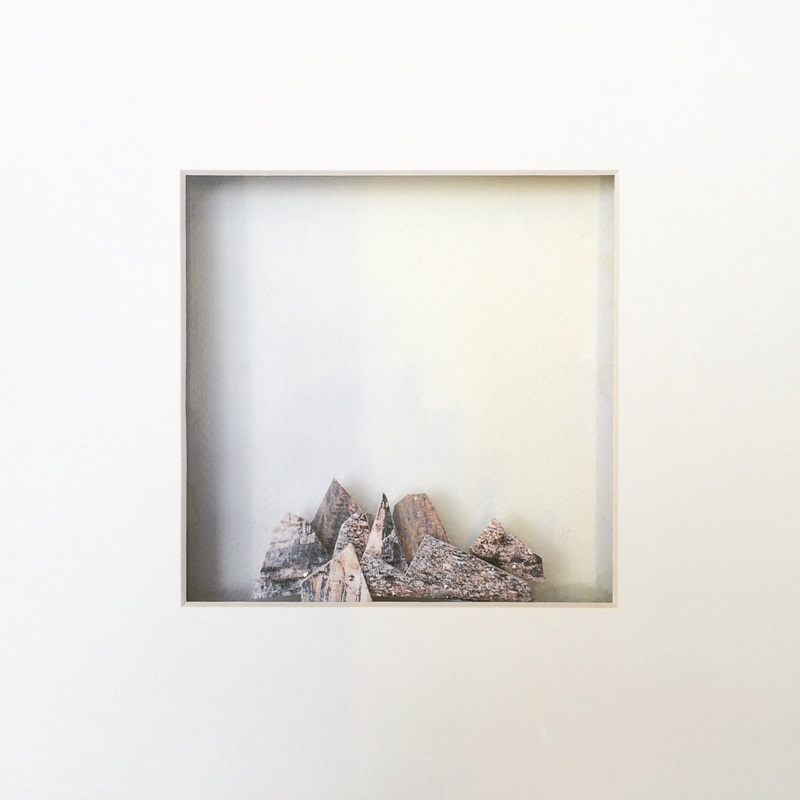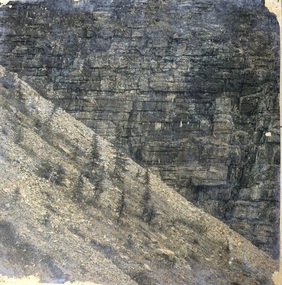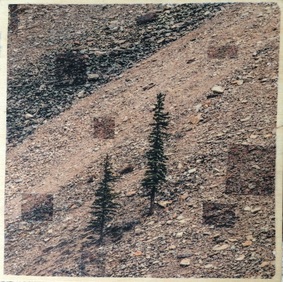|
I absolutely adore installation art. Walking into a space where the entire room is a work unto itself is so captivating to me. Environmental art is an installation that becomes part of an outdoor environment and I was really excited to create within this realm. Working with Alma Louise Visscher, who is currently working within installation art, has been an invaluable opportunity. She was generous to share so much of her own process with all of us, holding workshops to show us how she uses fabric and working with us one on one as well. Many of us were inspired to take what we learned and the fabric we dyed into our own practice. For me, the process of naturally dying fabric fit perfectly within the body of work that I already had in progress. The bundle dying technique began with the gathering of found wildflowers, which became a bit of an experiment to see how different colours, textures, parts of the plant, and plant species, responded to the dying process. I have been particularly enamoured with the vibrancy of the clover in our region this summer so I knew I wanted to grab big bundles of these purple and blue flowers. I also added dried lavender, rose and hibiscus petals that created a more defined texture. After arranging the flowers on prepared fabric, it was tightly bundled and steamed. Unrolling the piping hot bundle was an exciting part of the process - we could finally see how our "experiment" turned out! And after it was dry and all the fragments shaken off, our fabric became the new "canvas" for our creations. Some used it just like a canvas, painting over it, others used it as clothing, and another artist framed it as is. Mine was used to create another part of my mountain work, cut and shaped into pyramids - approaching the mountain range with yet another point of view and fragmentation. These little mountains were completed and installed in Jasper National Park, bringing my Fort McMurray studio journey full circle into the Rockies themselves. I even strapped one of them to my backpack as I hiked up Wilcox Pass. Being drawn to natural elements and processes, I loved having this beautiful fabric to create the fragile pyramids. The next step was to install the work among the trees, with the goal of recording how the created work interacted with and related to it's natural surroundings - especially concerning a variety of light conditions. Serendipitously, the trees in our campsite were perfectly spaced for me to create my environmental installation within the comfort and safety of our own space. Strewn from rough twine, they were hung among the trees, and LED tea lights were carefully placed inside for me to document the warm evening light changing to darkness. I found the transparency and colour of the fabric allowed the work to change, blend and compliment its surroundings - it felt as if they were meant to be there! Creating my own installation sparked a desire to continue to push my creative limits in so many ways. The entire residency was a creative retreat in the midst of a time of transition - a welcome time of refinement and exploration. It was a blessing to be able to glean from our two mentors, and to dive into these six weeks in the studio with them. I was stretched and rejuvenated and oh, so grateful to have had this experience. “We have to continually be jumping off cliffs and developing our wings on the way down.” ― Kurt Vonnegut The fifth piece in the processing series is a diorama created with pieces of mountain photographs I have taken in the Rockies, transferred to foam core and arranged in a shadow box. I have had a million ideas percolating with the shadow box/diorama/photograph techniques and finally had the right venue to really start to work with it. Our mentor artist, Alma, showed me a new way to do photo transfers that proved to be much better for my purposes and I've been running with it ever since. I'm quite excited for some future project ideas! I just love how experimenting can spark a whole host of new ideas and options; which is one of the main reasons I do not stick to one medium or technique. There is such a freedom is mixing mediums and disciplines. In this piece, I utilized the photo transfer technique to fragment the mountain range even further, as well as the tea painting from the first two works of the series. I loved how the natural teas complimented the natural rock from my photographs... something that wouldn't have worked quite the same if I had used watercolour or gouache. Drawing from the first four projects, this one was yet another variation of the main theme - a similarity I can recognize from my musical background. Aren't the arts lovely, how they can weave together? And gleaning from both of our mentor artists, Alma Louise Visscher and Kritsana Naowahkun, who create in different ways and mediums, was an incredibly enriching experience. Being in an environment where we could watch them at work, as well as get real-time feedback and ask questions, made the entire process so organic. The room oozed with inspiration and I know this experience will continue to fuel my practice for quite some time! Before I ventured into the 3-dimensional diorama, I wanted to create 2-D studies to experiment with various materials and techniques, like layering or using colour. The possibilities are endless but revealing the image for the first time has to be the part that is the most fun! ;) Early next week I'll be sharing the last part of my residency work, an environmental installation that has sparked a whole new love for installation art. And if you're in Fort McMurray, don't forget to head down to MacDonald Island to see the entire group exhibition! |






